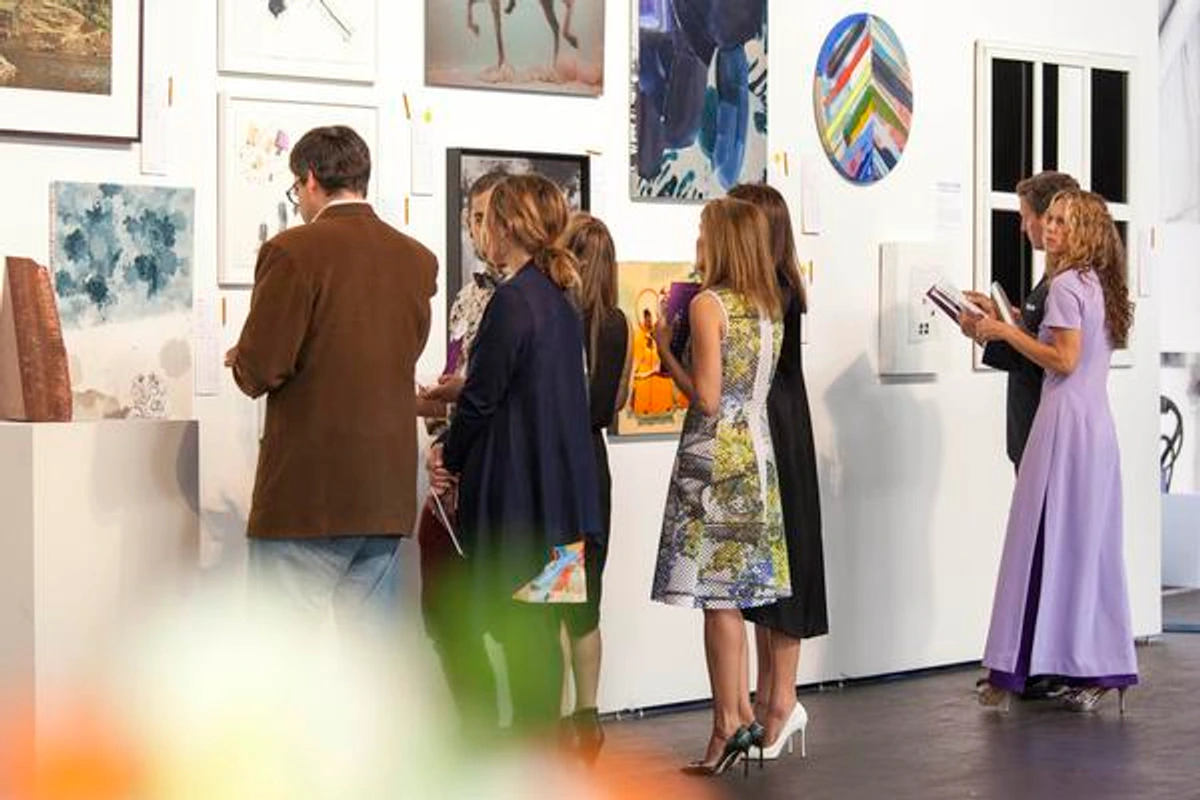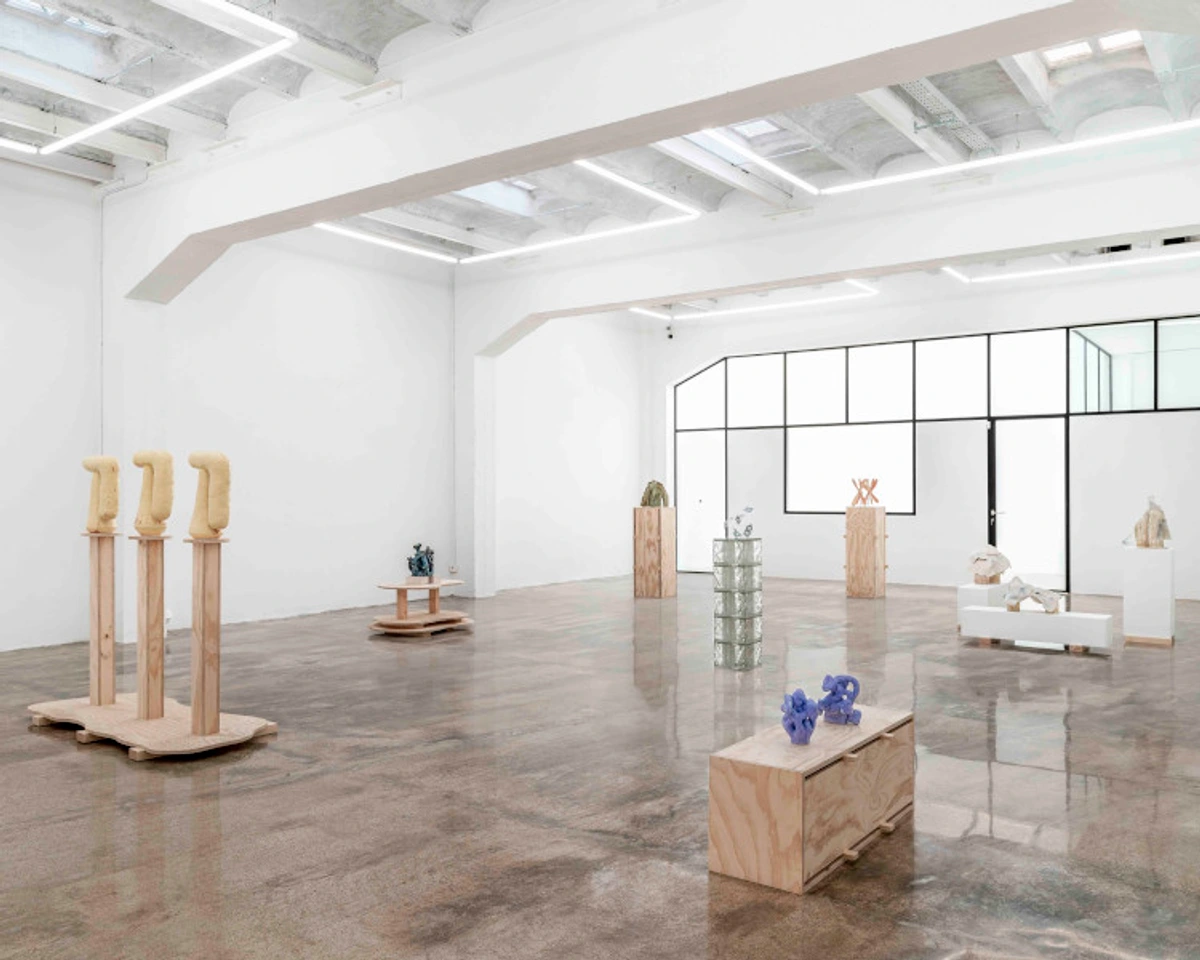
Etsy vs. Saatchi Art: Navigating Online Art Marketplaces (An Artist's Take)
As an artist who also buys art, I share my personal take on navigating online marketplaces like Etsy and Saatchi Art. Discover the pros, cons, tips for buying, and how to find art that truly resonates with you.
Navigating the Online Art Marketplaces: Etsy vs. Saatchi Art (A Personal Take)
Okay, let's talk about buying art online. It's a jungle out there, isn't it? A beautiful, overwhelming, potentially wallet-draining jungle. For years, the idea of buying art felt like something reserved for galleries with hushed tones and intimidating price tags. But the internet changed everything. Suddenly, art is everywhere, accessible with a click. And two platforms that often pop up when you start looking are Etsy and Saatchi Art. As an artist who also buys art, I've spent a fair bit of time poking around both, sometimes looking for inspiration, sometimes just daydreaming, and yes, sometimes actually buying. My very first online art purchase was a small print from an artist I admired on Etsy – the thrill of finding it felt like uncovering a hidden treasure, but the anxiety about whether it would actually look good on my wall was real. So, let's break it down, from my perspective.
The General Online Art Buying Experience
I remember the first time I seriously considered buying art online. It felt... risky. Like, how do you know what you're getting? Is the color really that vibrant? Will it look good on my wall, or just like a sad little thumbnail blown up too big? It's a different experience than walking into a local art gallery or even an art fair. There's a layer of detachment, a need for trust. But the sheer volume and variety available online are undeniable. It's like having the world's largest gallery at your fingertips, minus the free wine at the opening.
Beyond Etsy and Saatchi Art, the online art market is vast, encompassing everything from major auction houses moving online to smaller curated platforms and independent artist websites. It can feel overwhelming just knowing where to start. But focusing on platforms like Etsy and Saatchi Art offers two distinct entry points into this digital world, each with its own strengths and quirks.
One challenge that often gets overlooked is truly visualizing how a piece will look in your specific space. Photos online can be deceiving. Will that large abstract piece overwhelm your living room? Will that small print get lost on a big wall? I've definitely bought pieces that felt perfect online only to realize upon arrival that the scale was all wrong for the intended spot. Measuring your wall space and comparing it to the artwork dimensions (including any framing) is crucial. Some platforms or artists offer mock-up services, showing the art in a room similar to yours, which can be incredibly helpful. Don't skip this step, or you might end up with a beautiful piece that just doesn't fit.
Another thing that often gets overlooked when buying globally online is the potential complexity of international shipping, customs fees, and import duties. These can add unexpected costs and delays, turning a seemingly affordable piece into something much pricier by the time it reaches your door. It's definitely something to factor into your budget and research before hitting 'buy'. Checking the artist's location early in the process is key to anticipating these potential hurdles.
Buying directly from an artist's own website (like, say, mine) offers perhaps the most direct connection and ensures your money goes straight to the creator. The experience varies wildly depending on the artist's setup – some have slick, professional shops, while others are more basic. The main difference is the lack of a large platform acting as an intermediary for disputes or standardized policies, meaning you rely entirely on the artist's professionalism and communication. It's the ultimate way to support an artist, but requires a bit more trust and direct communication.
Etsy: The Crafty Corner Turned Art Hub
Etsy. Ah, Etsy. For many, it's the go-to for handmade crafts, vintage finds, and quirky gifts. But it's also become a massive marketplace for artists selling everything from prints to original paintings and mixed media art. My experience with Etsy art has been... varied. You can find absolute gems, truly unique pieces directly from the artist's studio. I once stumbled upon a series of small, intricate ink drawings that felt like they were pulled straight from a dream – the artist's profile told a fascinating story, and the direct messages we exchanged made the purchase feel incredibly personal. You can also find mass-produced stuff masquerading as handmade. It requires a bit of digging – think of it as needing your digital magnifying glass and detective hat. You might spend hours falling down a rabbit hole of beautiful things, only to emerge blinking at your screen with a wishlist longer than your arm.
The Etsy Vibe
Etsy feels personal. You're often buying directly from the creator. Their profile tells a story, their shop policies are their own. It's the digital equivalent of a bustling craft market, but global. This is fantastic if you're looking for something specific, something with a handmade touch, or if you want to support independent artists directly. It's less about the 'art market' in the traditional sense and more about connecting makers with buyers. You'll find a huge range of styles here, often leaning towards illustration, prints, fiber art, and ceramics, alongside paintings and drawings.
One thing to be aware of on Etsy is the prevalence of print-on-demand services. Many artists use these services, which means the print is produced and shipped by a third party only after you order it. This isn't inherently bad, but it can impact the quality of the print, the paper used, and the packaging, and it means you're not getting something the artist personally printed or handled. Always check the item description and the artist's process notes to understand if you're buying a print-on-demand item or something the artist produced themselves. The materials used, like archival paper and lightfast inks, are crucial for the longevity of prints, so look for those details in the description. I once bought a print that looked great online, but the paper felt thin and the colors weren't quite as rich as I'd hoped, likely due to it being a standard print-on-demand product rather than a fine art print.
Pros of Buying Art on Etsy:
- Direct Artist Connection: You can message the artist, ask questions about their process, materials, or even commission a custom painting. This personal touch is huge for me as an artist.
- Variety & Uniqueness: Because it's open to so many creators, the range of styles, mediums, and price points is vast. You can find everything from tiny, affordable prints to large, intricate originals.
- Affordability: Generally, prices on Etsy are more accessible, especially for art prints and smaller originals. It's a great place to start an art collection on a budget.
- Supporting Small Businesses: You know your money is likely going directly to the artist or a small studio.
Cons of Buying Art on Etsy:
- Inconsistency: Quality can vary wildly. Photos might not perfectly capture color vibrancy, texture, or finish. What looks great online might feel different in person. It's up to you to vet the seller, read reviews, and scrutinize photos. Don't hesitate to ask for more photos, maybe even a short video, or close-ups of details or edges to get a better sense of the actual piece. Checking the artist's consistency across their other listings and external online presence (website, social media) can also give you clues about their professionalism. Searching can also be tricky; typing in a broad term like "abstract painting" can yield millions of results ranging from genuine fine art to digital downloads and unrelated craft items, making it hard to filter.
- Search Can Be Tricky: Finding exactly what you want among millions of listings can be overwhelming. The search algorithm isn't always the most art-focused.
- Less Focus on Investment: While you might find incredible talent, Etsy isn't typically where you go if your primary goal is art as an investment. The vast majority of purchases here are for personal enjoyment, which is, frankly, the best reason to buy art anyway.

Saatchi Art: Aiming for the Gallery Experience Online
Saatchi Art, on the other hand, feels like it's trying to replicate the gallery experience online. It's curated, slicker, and generally features artists who are positioning themselves more formally in the art world. You'll find a lot of paintings, photography, sculpture, and limited edition prints here. The typical inventory often leans towards painting, photography, and sculpture, with a focus on artists building more traditional art careers – think artists who are actively exhibiting in physical galleries, participating in major art fairs, or have pieces entering private or public collections.
The Saatchi Art Vibe
Saatchi Art feels more like a traditional art platform. They have curators, collections, and a focus on artists building careers. It's less about the 'craft' and more about the 'fine art'. The presentation is professional, and there's a sense of being in a more established marketplace. They even offer services like free art advisory, which can be helpful if you're feeling a bit lost or overwhelmed by the choices. Think of it like having a helpful gallerist online – they can suggest pieces based on your taste, budget, and space, guiding you through their extensive inventory. This service is particularly useful if you're making a more significant purchase or are new to collecting. I've used their advisory service myself when considering a larger piece; getting a second opinion and specific recommendations based on my space and existing collection was invaluable.
Pros of Buying Art on Saatchi Art:
- Curated Selection: While still vast, there's a level of curation that can help filter quality and style. You might feel more confident in the artistic merit of the pieces presented.
- Professional Presentation: Listings are generally more detailed, with better photos and artist information. They often handle shipping and logistics, which can be a headache on Etsy, especially for larger or more delicate pieces.
- Focus on Emerging & Established Artists: You're more likely to find artists who are actively exhibiting, have gallery representation, or are being collected. It's a good place to spot and buy art from emerging artists who are on a more traditional career path.
- Art Advisory Services: If you're feeling lost, their advisors can help you find pieces that fit your taste and budget.
Cons of Buying Art on Saatchi Art:
- Higher Price Point: Generally, prices are higher than on Etsy, reflecting the platform's positioning and the artists it attracts. You might need to check your bank balance before you start browsing the higher-end collections.
- Less Direct Artist Interaction: While you can contact artists, the platform acts more as an intermediary than Etsy does. It feels less like buying directly from the studio and more like buying through a gallery.
- Still Requires Due Diligence: While curated, it's still an online marketplace. You still need to research artists and understand what you're buying. Curation helps, but it's not a guarantee of future value or even perfect quality representation online.

Etsy vs. Saatchi Art: A Quick Comparison
Let's put them side-by-side, just for kicks:
Feature | Etsy | Saatchi Art |
|---|---|---|
| Vibe | Crafty, handmade, personal | Gallery-like, professional, curated |
| Price Range | Generally lower, very accessible | Generally higher, mid-range to high-end |
| Artist Access | Very direct, conversational | Less direct, more formal |
| Curation | Minimal, relies on search/discovery | Curated collections, art advisory |
| Focus | Handmade, unique, direct from maker | Fine art, emerging/established artists |
| Typical Art | Prints, Illustration, Fiber, Ceramics | Painting, Photography, Sculpture |
| Best For | Affordable finds, unique crafts, direct support | Building a collection, higher-end pieces |
Which One Should You Choose?
Honestly? It depends entirely on what you're looking for. If you're just starting to buy art, looking for something affordable, unique, or handmade, and you enjoy the thrill of the hunt and direct interaction, Etsy is probably a great place to start. It's less intimidating, and you can find incredible value. It tends to attract buyers looking for decorative pieces, unique gifts, or items that feel personally connected to the maker.
If you're looking for something more traditionally 'fine art', want a more curated experience, are interested in collecting art with an eye towards the artist's career trajectory, or are looking for larger, more significant pieces, Saatchi Art might be a better fit. It feels a bit more serious, for lack of a better word. It often appeals to collectors, interior designers, and those considering art with potential investment value.
But here's a thought: why choose just one? You might find affordable prints or unique small pieces on Etsy for certain spaces or gifts, while looking to Saatchi Art for a larger statement piece or something from an artist you're following more closely. It's not necessarily an either/or decision; they serve different parts of the online art market.
For me, as an artist myself, I appreciate the direct connection Etsy offers, but I also see the value in the professional platform Saatchi Art provides for artists aiming for a different market. It's two different ecosystems, both valid. And let's not forget the option of buying directly from an artist's own site – sometimes the most rewarding experience of all, as you know exactly who you're supporting and can build a direct relationship.

Tips for Buying on Either Platform
Okay, so you've decided to dive in. What have I learned from countless hours of browsing (and buying) that might save you some headaches? Regardless of where you choose to look, here are a few things I've picked up:
- Read the Description Carefully:
- Size, materials, framing (or lack thereof), shipping – it's all in the details.
- Don't just look at the pretty picture. Pay attention to the medium (is it oil, acrylic, watercolor, digital print?) and the surface (canvas, paper, wood?).
- For prints, check if it's a limited edition or open edition, and what type of paper and ink are used (look for archival quality!).
- Check the Artist's Profile & Presence:
- Look at their other work, their bio, their story. Does it resonate with you?
- This is part of the personal connection, especially on Etsy.
- Also, check if they have an external website or social media presence. This can give you a fuller picture of their work, consistency, studio process, and any exhibition history they might have. Seeing their work in different contexts or seeing photos/videos of them creating can build trust and connection.
- Check their location early on to anticipate potential international shipping costs and customs.
- Look at Reviews:
- What do other buyers say about the quality, shipping, and communication?
- This is your best friend for vetting sellers, particularly on less curated platforms like Etsy. Pay attention to comments about accuracy of representation online vs. in person.
- Ask Questions:
- Don't hesitate to message the artist or platform support if anything is unclear. A good seller will be happy to help. Ask about materials, process, or even request additional photos. Specifically, ask for photos of the artwork in different lighting conditions or next to a common object (like a book or a ruler) to get a better sense of scale and true color.
- Consider their response time and the clarity of their answers as a gauge of their customer service.
- Understand Returns & Disputes:
- What's the policy if it arrives damaged or just isn't what you expected? This is crucial when buying art online.
- What is the recourse if the color is significantly different from what was shown online? Understand the platform's dispute resolution process. Saatchi Art generally has more standardized policies than individual Etsy sellers.
- Consider Framing:
- Does the price include framing? If not, factor in the cost of framing your artwork. It can add up quickly! Consider if the artwork is a standard size or requires custom framing.
- Certificates of Authenticity (COAs):
- For original pieces or limited edition prints, a COA is important documentation. It's a signed document from the artist or gallery verifying the artwork's authenticity. Saatchi Art often facilitates this, while on Etsy, it varies greatly by seller. If you're buying an original or limited edition, ask if a COA is provided and what information it includes.
- Buy What You Love:
- This is the most important rule, in my opinion. Whether it's from Etsy, Saatchi Art, a gallery, or even directly from my own studio, art for your home should speak to you. Don't just buy it because you think it might be a good investment or because someone told you to. Buy it because you can't stop thinking about it.
FAQ: Your Burning Questions (Probably)
Is it safe to buy art from Etsy or Saatchi Art?
Generally, yes. Both platforms have payment protection systems. However, it's always wise to do your due diligence on the seller (check reviews, policies, external presence) and use secure payment methods. Buying directly from an artist's own website (like, say, mine) can also be very safe if they use reputable payment processors.
How do I know if the art is original?
Descriptions should clearly state if it's an original painting, a limited edition print, or an open edition print. On Saatchi Art, this is usually very clear and standardized. On Etsy, you might need to read carefully or ask the artist directly. An original is a one-of-a-kind piece created by the artist's hand. A limited edition print is part of a fixed number of reproductions, signed and numbered by the artist. An open edition print can be reproduced indefinitely. Understanding limited edition prints is helpful. If buying an original or limited edition, always ask for a Certificate of Authenticity (COA).
What about shipping?
Both platforms have systems for shipping, but the specifics vary by artist/seller. Check the shipping costs and policies before buying. Make sure the art will be properly packaged, especially for originals or framed pieces. Be mindful of potential international shipping costs, customs, and import duties if buying from abroad. Some artists or platforms are exploring more sustainable packaging options; if this is important to you, check their policies or ask.
Can I negotiate prices?
On Etsy, direct negotiation is sometimes possible, especially for originals, but it depends entirely on the artist. On Saatchi Art, it's less common, but not unheard of, particularly for higher-priced pieces. Don't be afraid to politely inquire, but also be prepared for a 'no'. Understanding art prices helps set realistic expectations. Keep in mind that platform fees (which can be significant) influence how artists price their work.
How do I display the art once I get it?
Ah, the fun part! Consider where it will go, the lighting, and how it fits with your existing decor. We have guides on how to decorate a wall and how to display different types of art.

What should I do when the art arrives?
First, inspect the packaging carefully for any signs of damage before opening. If there's significant damage, document it with photos before you even unwrap the art. Once opened, carefully inspect the artwork itself. Does it match the description and photos? Is there any damage from transit? Is the color significantly different from what you saw online? If there are issues, contact the seller and/or platform immediately, following their return/damage policy. Otherwise, find the perfect spot and enjoy your new piece!
What about the environmental impact of shipping art?
This is a growing concern. While not always explicitly stated, some artists and platforms are starting to use more sustainable packaging materials or consolidate shipments where possible. If this is important to you, look for mentions in the artist's profile or shop policies, or consider messaging them directly to ask about their packaging practices.
Final Thoughts: It's All About the Connection
Whether you lean towards the bustling marketplace of Etsy or the more curated halls of Saatchi Art, the core of buying art online, for me, is about finding something that resonates. It's about bringing a piece of someone else's vision, their energy, their story, into your space. It's a deeply personal act, even when done through a screen. I've found everything from quirky, affordable prints that make me smile every day (hello, Etsy!) to more substantial pieces that anchor a room and spark conversation (thank you, Saatchi Art!). One piece I bought from Saatchi Art, a large abstract painting, completely transformed my living room and still brings me joy years later. So, dive in, explore, and trust your gut. Happy hunting!
Looking for art directly from the artist? You can explore my available pieces here.
Curious about my own artistic journey? Read about my timeline.
If you're ever in the Netherlands, consider visiting my museum in 's-Hertogenbosch.




